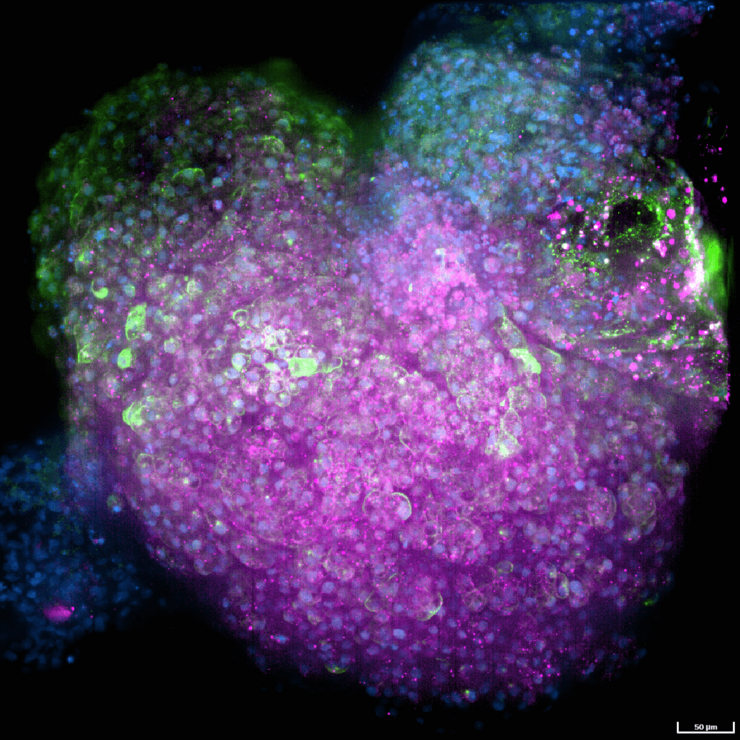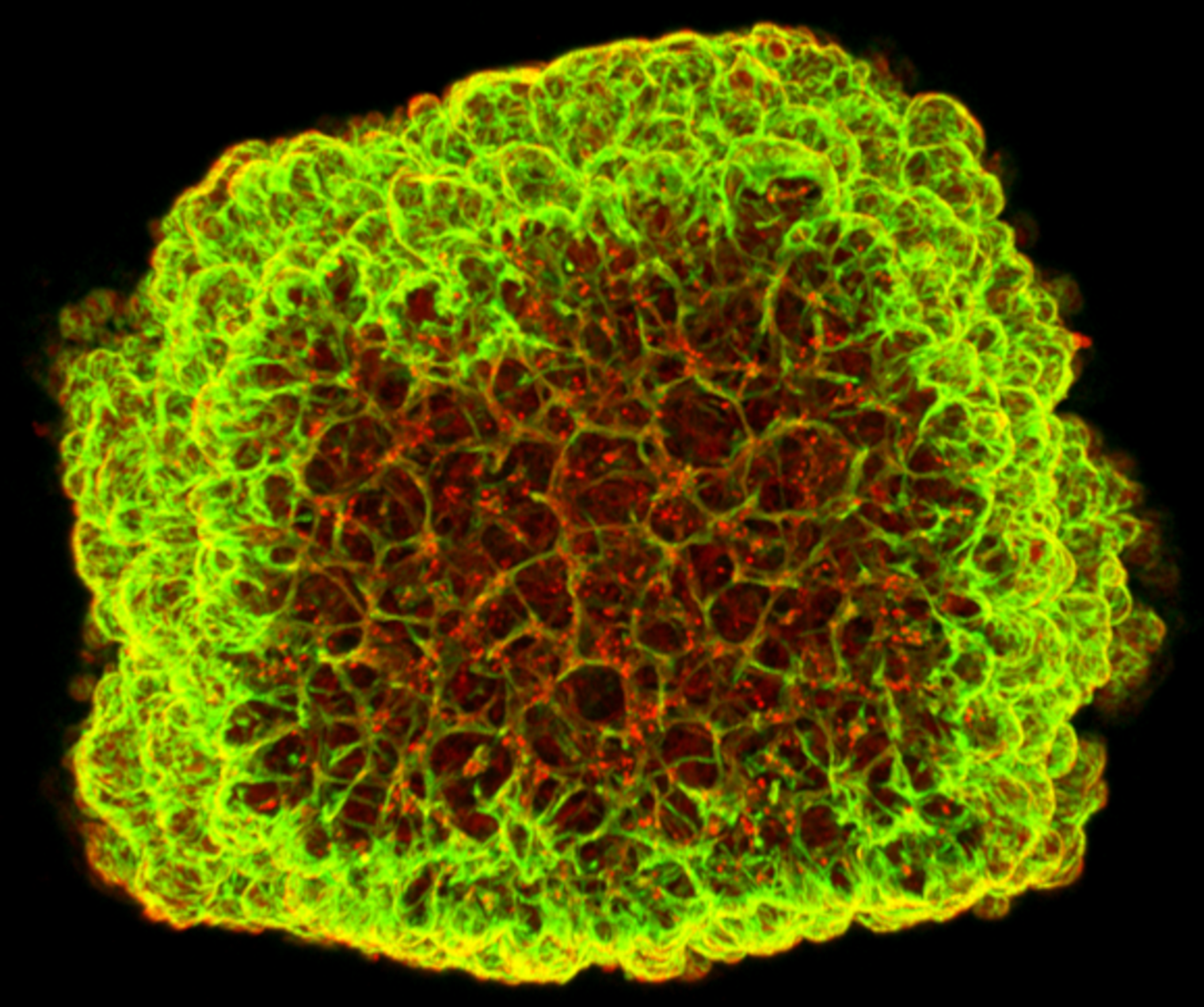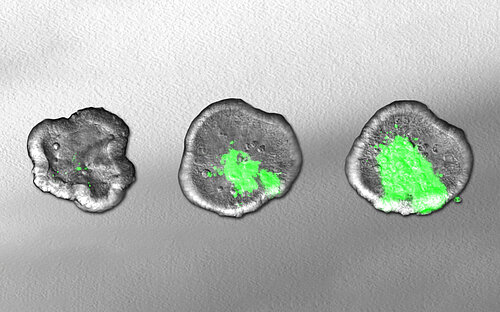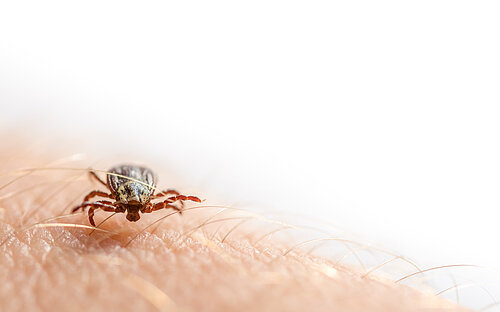Organoids - Mini organs with a big impact on infection research
Microscopic hearts, lungs, or brains that can be used for medical experiments – what sounds like science fiction has already become reality in infection research. So-called organoids are organ-like structures in miniature format resembling organs spatially and functionally. This makes them valuable tools for biomedical research.
Organoids are based on stem cells containing the blueprint for all cells and structures of the human body. With the addition of specific growth factors, they differentiate to form 3D self-organized structures that resemble tissue on a smaller scale, typically with a diameter of 400 µm to 2 mm. At the HZI, this process is automated by using an AI-enabled cell culture robot. This allows a production in larger quantities and with the most consistent quality possible.
Organoids allow researchers to simulate infectious diseases in realistic models and to observe them under the microscope. By exposing different organoids to a pathogen, they can study which structures are particularly affected. Prof Josef Penninger, head of the department “Innovative Organoid Research” and Scientific Director of the HZI, co-led the first paper using kidney and blood vessel organoids to study SARS-CoV-2, published in 2020. In a later study, it was discovered that SARS-CoV-2 can also attack the intestines, which explains some of the rarer symptoms of COVID-19.
Furthermore, organoids are used in the search for new medications. On infected organoids, researchers test various active substances and can observe in real time how the organoids recover from the infection.
Advantages of organoids
Compared to other research methods, organoids offer several advantages: In addition to their longer lifespan, organoids are much more realistic depictions of organs compared to two-dimensional cell structures as they consist of different interacting cell types and resemble real organs in their spatial structure. The signaling pathways of the cells also correspond more closely to the processes in the human body. This way, researchers can record the activity of heart or brain organoids with the help of microelectrode arrays (MEA chip systems) that resemble ECG or EEG measurements. Nevertheless, organoids cannot completely replace animal experiments, as they do not allow the observation of an entire body including its metabolism and immune system.
Organoids in individualized infection research
“Organoids do not only have the advantage of enabling us to conduct laboratory tests under near-physiological conditions. The technology also fits seamlessly into our research goals in the field of individualized infection research and the One Health concept,” says Josef Penninger. When scientists culture organoids from patient samples, they carry the exact genome of the patient and thus allow the examination of specific responses to an infection or treatment. By using genome editing techniques like CRISPR-Cas, researchers can create special genetic features in the organoids. In the HZI's vision of individualized infection research, they thus represent an important step forward. The HZI's One Health approach, which focuses on the interaction between humans, animals, and the environment in health research also benefits from organoid research. “We can not only grow organoids from human stem cells.cWith the help of organoid systems, we can study virus-host interactions in different species and investigate how viruses can be transmitted between different them,” says Dr Max Kellner, head of the junior research group “Laboratory for Virus-Host Co-Evolution”.
The long-term goal of the researchers at the HZI is to create an organoid platform able to provide various organoids to research projects. This will enable scientists to better study infectious diseases and develop treatments more quickly in the future. Furthermore, more complex organoids as well as multi-organ models with multiple interacting organoids are part of the researcher’s goals.
(cbi)
Status: October 2025
Involved research groups
-
Biomolecular Condensates in Infection
 Dr Christiane Iserman
Dr Christiane Iserman -
Innovative Organoid Research
 Prof Dr Josef Penninger
Prof Dr Josef Penninger -
Laboratory for Virus-Host Co-Evolution
 Dr Max Kellner
Dr Max Kellner









